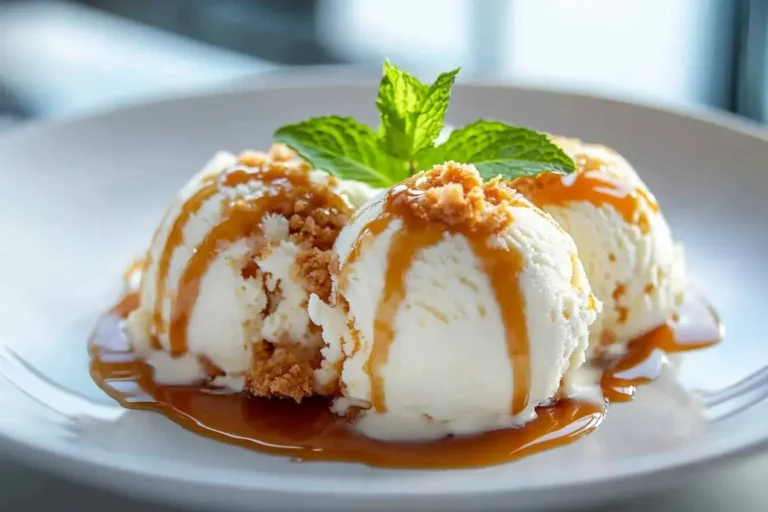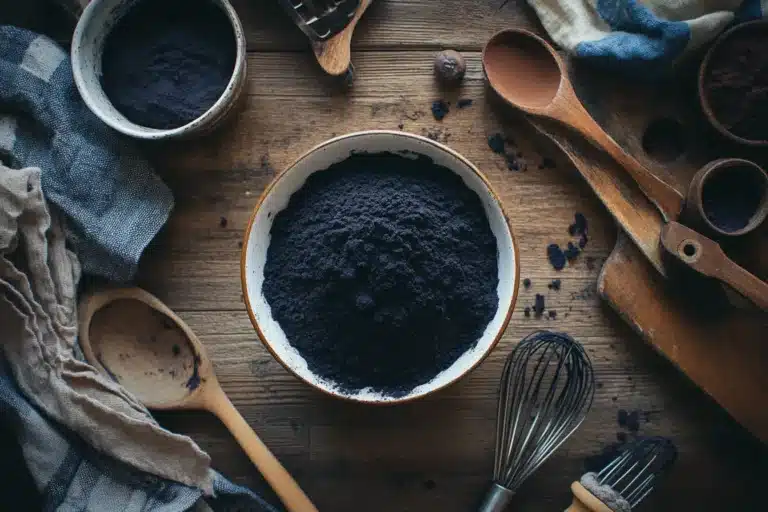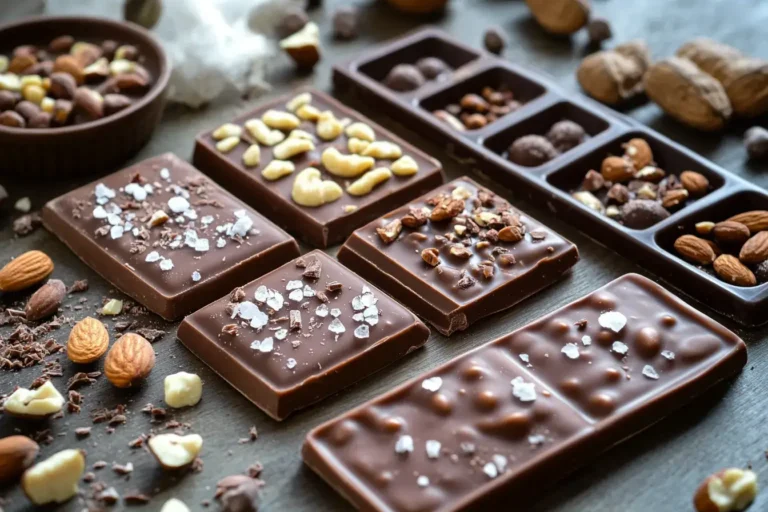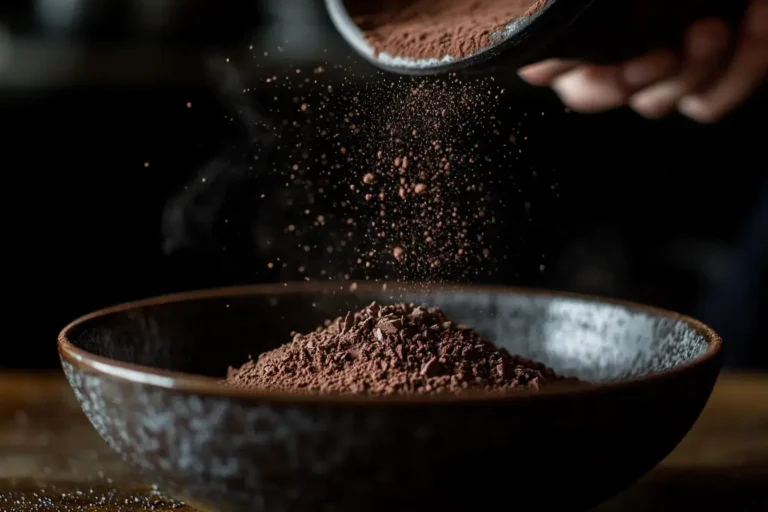Bonbons Recipe: Easy Homemade Dessert Treats
Bonbons are a perfect treat—small, indulgent bites of sweetness that are surprisingly easy to make at home. While they might seem like something you’d only find in a gourmet shop, you can create these delightful sweets in your kitchen with just a few simple ingredients.
In this guide, you’ll find a step-by-step process to make delicious, homemade bonbons. Whether you’re a seasoned baker or a beginner, this recipe is adaptable, making it easy for anyone to follow. Plus, it’s customizable, allowing you to adjust for dietary needs and flavor preferences.
Why Make Homemade Bonbons?
Easy Yet Impressive Dessert
One of the best reasons to try making bonbons at home is how simple they are despite looking fancy. They offer the satisfaction of creating a beautiful dessert without requiring a lot of complicated steps. With just a few ingredients, you can create an elegant and impressive sweet treat that’s sure to wow your guests.
Even though they look sophisticated, bonbons are easy to assemble, making them ideal for both beginners and experienced cooks alike. Once you master the basic technique, you can start experimenting with different flavors and coatings to make them your own.
Perfect for Any Occasion
These small treats are versatile enough to fit any occasion, from birthday parties and holiday gatherings to casual dinners or family events. Their small, bite-sized nature makes them ideal for sharing, and they also make thoughtful gifts.
Because you can customize the fillings and decorations, they can be tailored to match the theme of any event or celebration, ensuring they’re always a crowd-pleaser. Plus, they store well, meaning you can make them ahead of time for added convenience.
Customizable for Dietary Preferences
One of the best things about making bonbons from scratch is the ability to adjust the recipe to accommodate different dietary needs. Whether you’re catering to vegan, gluten-free, or nut-free diets, this recipe can be modified with simple substitutions.
By choosing your own ingredients, you can ensure they meet any dietary restrictions while still tasting great. Plus, the freedom to experiment with different fillings and coatings means you can easily tailor this recipe to fit your preferences.
Ingredients and Substitutions for Bonbons
Essential Ingredients for Classic Bonbons
For this recipe, you will need the following basic ingredients:
- 12 oz dark or milk chocolate (for coating)
- 1 cup butter (or plant-based margarine for vegan)
- 2 cups powdered sugar
- 1 tsp vanilla extract
- 1 cup shredded coconut (optional)
- 1 cup finely chopped nuts (optional)
- 2 tbsp heavy cream (or coconut cream for dairy-free)
- Pinch of salt
Substitution Options for Different Diets
If you’re catering to specific dietary needs, here are some simple substitutions:
- Vegan Bonbons: Use plant-based margarine in place of butter and coconut cream instead of heavy cream. Make sure to use dairy-free chocolate for the coating.
- Gluten-Free Bonbons: This recipe is naturally gluten-free, but be sure to double-check that all your ingredients, especially the chocolate, are certified gluten-free.
- Nut-Free Bonbons: Simply omit the chopped nuts. If you still want a bit of crunch, consider using seeds like sunflower or pumpkin seeds as an alternative.
This recipe is easy to adjust to suit various tastes and preferences. You can also switch up the flavorings, using extracts like peppermint or almond, or try adding a layer of fruit preserves for a different flavor.
Step-by-Step Instructions to Make Bonbons
1: Prepare the Filling
- Cream the butter and sugar: In a large bowl, beat 1 cup of butter with 2 cups of powdered sugar until smooth and creamy.
- Add flavoring and texture: Stir in 1 teaspoon of vanilla extract and a pinch of salt. Mix in 2 tablespoons of heavy cream (or coconut cream for a dairy-free version) until fully incorporated. If using, fold in 1 cup of shredded coconut or finely chopped nuts for added texture.
- Chill the filling: Place the filling mixture in the refrigerator for about 30 minutes to firm up, making it easier to roll into balls.
2: Shape the Centers
- Form the bonbon centers: Scoop out small portions of the chilled filling (about 1 tablespoon each) and roll them into balls.
- Freeze the centers: Place the rolled balls onto a parchment-lined baking sheet and freeze them for at least 1 hour. This helps the centers stay firm when coated with chocolate.
3: Coat with Chocolate
- Melt the chocolate: While the bonbon centers are freezing, melt 12 oz of chocolate in a double boiler or microwave. Stir frequently until the chocolate is smooth and fully melted.
- Dip the bonbons: Using a fork or dipping tool, dip each frozen bonbon center into the melted chocolate, making sure it’s completely coated. Let any excess chocolate drip off before placing the bonbon back on the baking sheet.
- Decorate (optional): While the chocolate is still wet, sprinkle with toppings like crushed nuts, coconut flakes, or sprinkles for decoration.
- Chill again: Return the bonbons to the fridge for 30 minutes, or until the chocolate has fully hardened.
Tips and Tricks for Perfect Homemade Bonbons
Achieving a Smooth Chocolate Coating
To achieve a smooth and shiny finish on your bonbons, it’s important to melt the chocolate carefully. If you’re comfortable with tempering, tempering your chocolate will give you a glossy, professional-looking coating. Otherwise, melt the chocolate slowly, either over a double boiler or in short microwave intervals, to ensure it doesn’t burn.
Adding a small amount of coconut oil to the chocolate can also help make it smoother and easier to dip the bonbon centers.
Making Bonbons in Advance
These treats are perfect for preparing ahead of time:
- Prepare the filling early: You can make the filling up to 2 days ahead and store it in the refrigerator. When you’re ready to dip them in chocolate, simply roll them into balls and freeze.
- Freezing leftovers: Bonbons freeze well and can be stored for up to 3 months. Place them in an airtight container, with parchment paper between layers, and freeze.
Preventing Chocolate Cracks
To avoid cracks in the chocolate coating, let the bonbon centers sit at room temperature for a few minutes before dipping them in the warm chocolate. If the centers are too cold, the sudden change in temperature can cause the chocolate to crack as it hardens.
Variations and Dietary Adjustments for Homemade Bonbons
Recipe Variations for Different Tastes
- Peanut Butter Bonbons: For a nutty twist, replace the filling with peanut butter or almond butter. These go well with dark chocolate for a rich, indulgent treat.
- Fruit-Filled Bonbons: Add a spoonful of raspberry or apricot jam to the center of each bonbon for a fruity surprise.
- Mint Chocolate Bonbons: Add a few drops of peppermint extract to the filling and coat with dark chocolate for a refreshing, minty version.
How to Make Vegan Bonbons
To create vegan bonbons, simply swap the dairy-based ingredients with plant-based alternatives:
- Use margarine in place of butter and coconut cream instead of heavy cream.
- Make sure to choose dairy-free dark chocolate for the coating.
These substitutions will give you a completely vegan version of this delicious treat without compromising on taste or texture.
How to Serve Homemade Bonbons
Beautiful Presentation Ideas for Bonbons
Presentation is important when serving these treats. Arrange them on a platter, lined with parchment paper, or serve them in small decorative cups. If you’re giving them as gifts, pack them in a gift box or clear bag tied with a ribbon.
You can also decorate the bonbons with drizzled chocolate, sprinkles, or crushed nuts to make them even more visually appealing.
What to Serve with Bonbons
- Coffee or Tea: These treats pair beautifully with a cup of coffee or tea. The bitter notes in coffee, in particular, complement the sweetness of chocolate.
- Champagne: For a more indulgent pairing, serve bonbons with champagne. The effervescence of champagne cuts through the richness of the chocolate.
- Dessert Wine: A sweet dessert wine, like Moscato or a late-harvest Riesling, also pairs nicely with these sweet treats.
Nutritional Information for Bonbons
| Nutrient | Amount (per serving) |
|---|---|
| Calories | 120 |
| Fat | 8g |
| Carbohydrates | 14g |
| Protein | 1g |
| Sugar | 11g |
Health Benefits of Key Ingredients
- Dark chocolate is high in antioxidants and can support heart health and reduce inflammation.
- Nuts provide a source of healthy fats and protein, which can help keep you full and provide important nutrients like fiber and vitamin E.
While bonbons are a sweet treat, including healthy ingredients like dark chocolate and nuts can make them a slightly more nutritious option.
History of Bonbons: A French Classic
The history of bonbons dates back to 17th-century France, where the term “bonbon” originated from the French word “bon,” meaning “good.” Initially, these were simple sugar-coated fruits and nuts enjoyed by French royalty. Over time, they evolved into more elaborate confections, often filled with chocolate or cream and covered in a shiny coating.
Today, bonbons are enjoyed around the world in many different forms, from traditional chocolate varieties to more modern, creative versions.
Storing and Reheating Bonbons
Best Way to Store Bonbons
- Room Temperature: Bonbons can be stored in an airtight container at room temperature for up to 1 week.
- In the Fridge: For longer storage, keep them in the fridge for up to 2 weeks. Just make sure they’re well sealed to avoid moisture affecting the chocolate.
Freezing Bonbons for Later
Bonbons can also be frozen for longer storage. To freeze, place them in a freezer-safe container with layers of parchment paper in between. They will last for up to 3 months in the freezer.
Frequently Asked Questions (FAQs) About Bonbons
Can I Make Bonbons Without Chocolate?
Yes, if you prefer, you can roll the filling in cocoa powder, shredded coconut, or crushed nuts instead of dipping them in chocolate. This gives the bonbons a different texture while still keeping them delicious.
How Do I Prevent Chocolate from Cracking?
Make sure the bonbon centers aren’t too cold when dipped in chocolate. Let them sit at room temperature for a few minutes before dipping to prevent the chocolate from cracking as it hardens.
How Do I Make Sugar-Free Bonbons?
To make a sugar-free version, use sugar-free chocolate and swap powdered sugar for a sugar substitute like erythritol. You can also use natural sweeteners like stevia or monk fruit for the filling.
Conclusion: Time to Indulge in Homemade Bonbons
Creating bonbons at home is a fun, rewarding experience that results in a delicious treat everyone will love. Whether you’re making them for a special occasion or just to treat yourself, these confections are sure to impress. With a variety of flavor options and dietary adjustments, this is a recipe that can easily be tailored to suit anyone’s preferences.
Try this recipe today and share your bonbon creations with friends and family. Don’t forget to leave a comment with your tips, variations, or experiences making these tasty treats!





